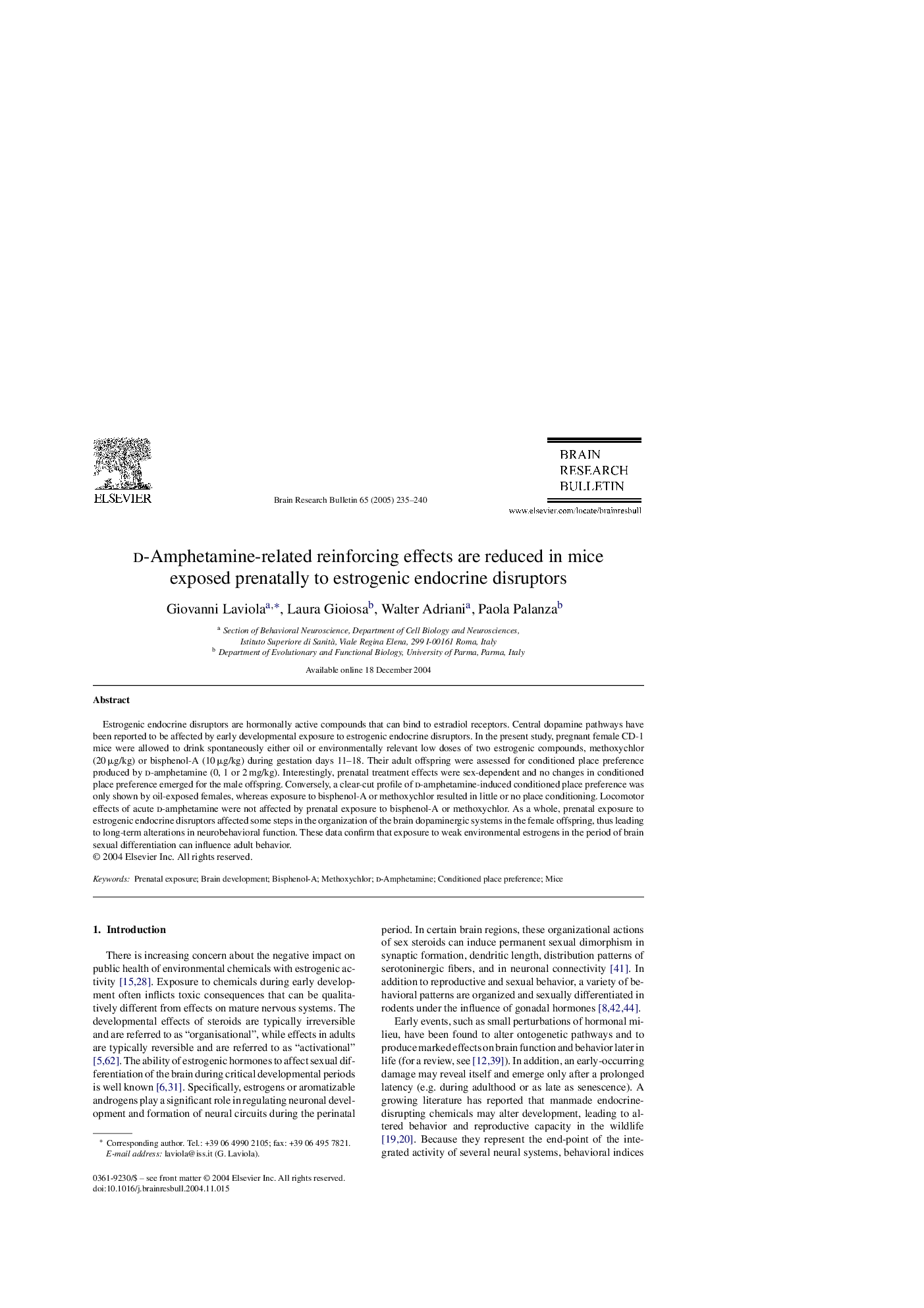| Article ID | Journal | Published Year | Pages | File Type |
|---|---|---|---|---|
| 9409474 | Brain Research Bulletin | 2005 | 6 Pages |
Abstract
Estrogenic endocrine disruptors are hormonally active compounds that can bind to estradiol receptors. Central dopamine pathways have been reported to be affected by early developmental exposure to estrogenic endocrine disruptors. In the present study, pregnant female CD-1 mice were allowed to drink spontaneously either oil or environmentally relevant low doses of two estrogenic compounds, methoxychlor (20 μg/kg) or bisphenol-A (10 μg/kg) during gestation days 11-18. Their adult offspring were assessed for conditioned place preference produced by d-amphetamine (0, 1 or 2 mg/kg). Interestingly, prenatal treatment effects were sex-dependent and no changes in conditioned place preference emerged for the male offspring. Conversely, a clear-cut profile of d-amphetamine-induced conditioned place preference was only shown by oil-exposed females, whereas exposure to bisphenol-A or methoxychlor resulted in little or no place conditioning. Locomotor effects of acute d-amphetamine were not affected by prenatal exposure to bisphenol-A or methoxychlor. As a whole, prenatal exposure to estrogenic endocrine disruptors affected some steps in the organization of the brain dopaminergic systems in the female offspring, thus leading to long-term alterations in neurobehavioral function. These data confirm that exposure to weak environmental estrogens in the period of brain sexual differentiation can influence adult behavior.
Keywords
Related Topics
Life Sciences
Neuroscience
Cellular and Molecular Neuroscience
Authors
Giovanni Laviola, Laura Gioiosa, Walter Adriani, Paola Palanza,
